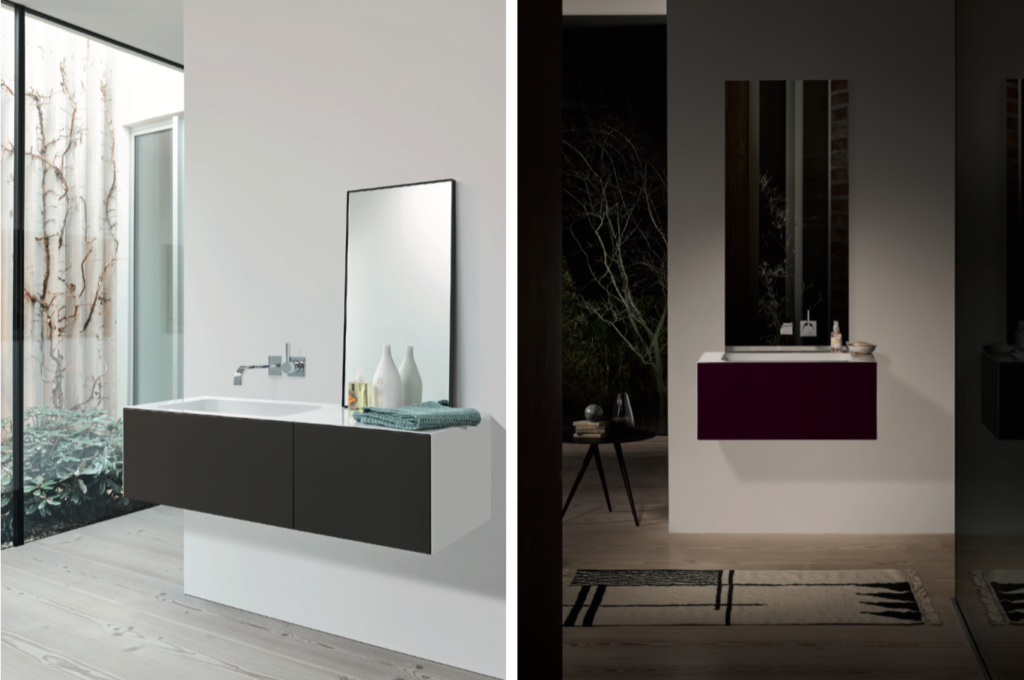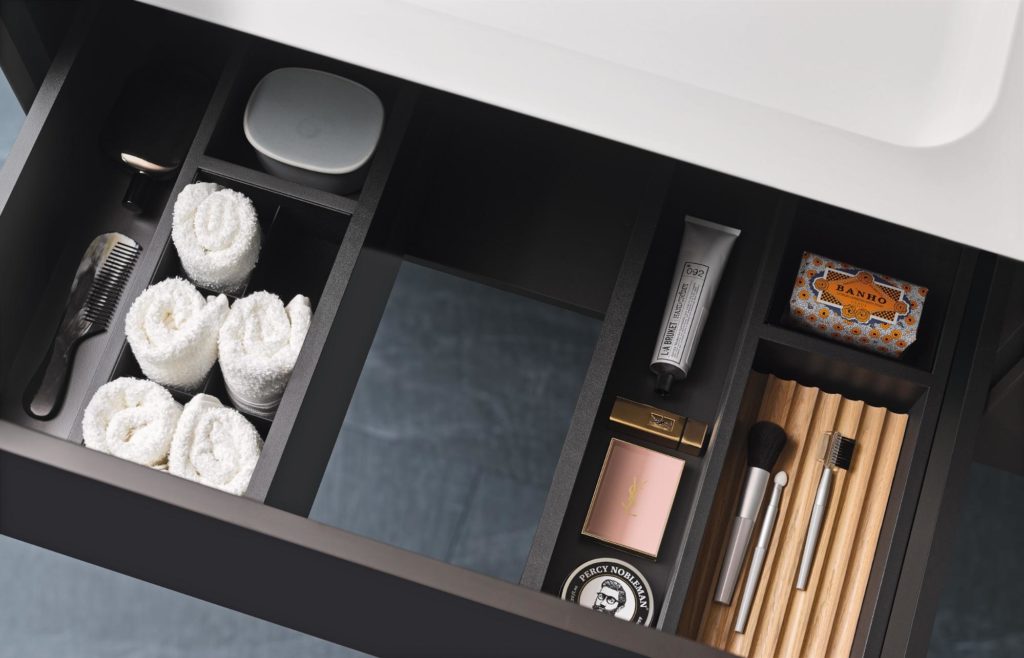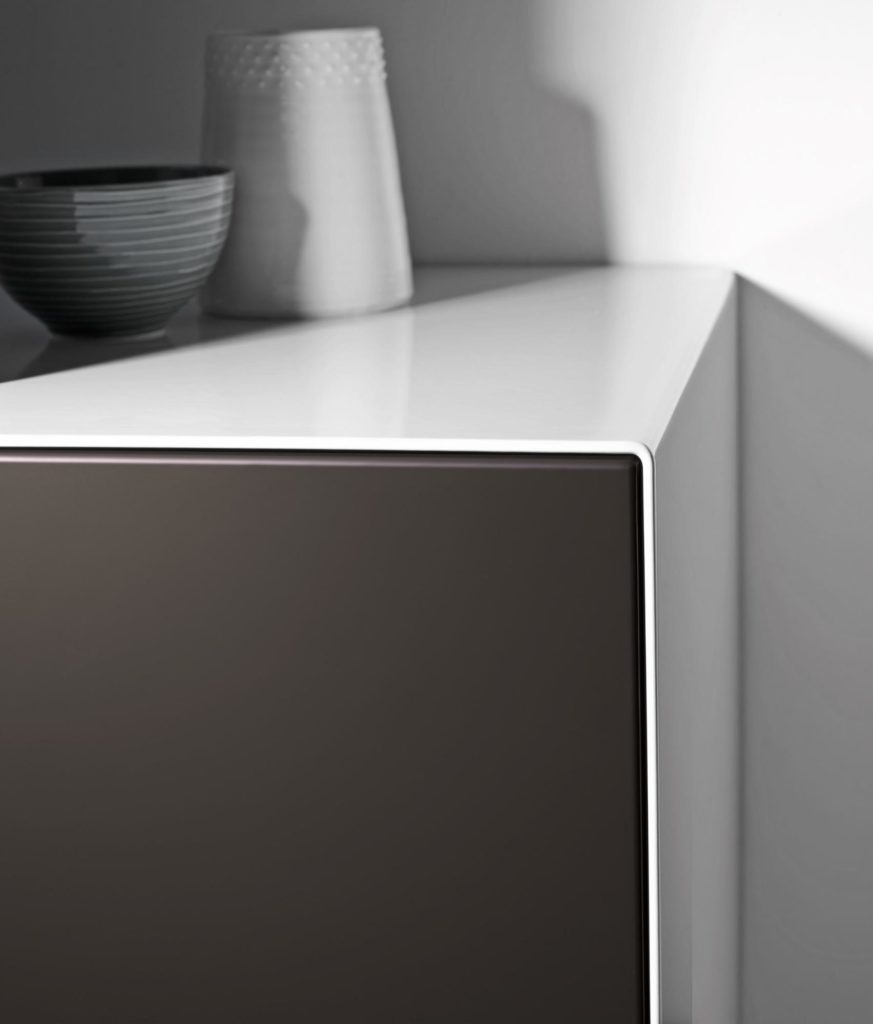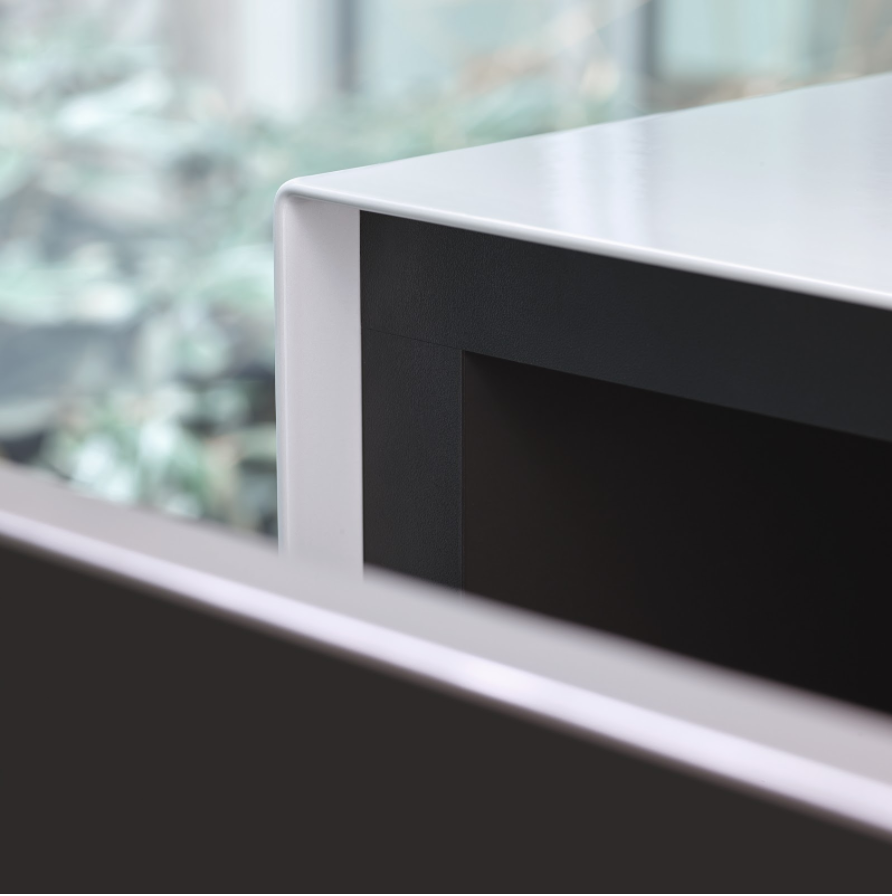Every bathroom can be beautiful. Considered by many the most luxurious space in a home, a bathroom should inspire tranquility and calm both in materiality and design. That’s why the products specified for the space should be versatile, high-performing and of course, stylish. A beautiful bathroom has the power to be synonymous with not only elegance, but technological innovation as well.
Alape GmbH, a leading German manufacturer of glazed steel sinks, provides forward-thinking aesthetic solutions for interior architecture. The company has exhibited stunning craftsmanship in the sanitary design industry since 1896 and is a key brand within the Dornbracht Group. The world’s first built-in sink basin and the first bathroom cabinet-washtable combination were invented by the outstanding manufacturer, and it continues to reimagine possibilities within bathroom and kitchen design.

Left: WP.FO in Shadow Earth, 1250 x 450 x 350 mm; Right: WP.FO2 in Aubergine, 800 x 450 x 350 mm
Alape’s newly-released WP.FO is one of the company’s sleekest bathroom furniture offerings yet. Existing as a homogenous design, the washplace includes a basin, shelf and storage unit inspired by modern architecture. It combines material lightness with utmost functionality in a single piece, while also offering optimal storage space.
Alape developed the beautifully-designed, seamless surfaces of the WP.FO through highly precise manufacturing technology. The washplace is encased in a wafer-thin sheet of 3 mm-thick glazed steel. Its delicate yet sturdy look is thanks to the exact geometry and minimal tolerances used to create the product. The making process behind such a streamlined design is something Alape is continually trying to innovative for its unique collections.
“Alape continually improves its technologies to explore the limits of the material,” said Jürgen Kloss, design and production manager at Alape. “For us, glazed steel is the perfect material … The smallest radii, perfect details, exact connections and dimensional accuracy characterize all our products.”

WP.FO – Drawer in Shadow Earth
One of Alape’s major milestones was the development of the dish basin by designer Gerhard Busalt in 1992 — a moment that signaled the start of the company’s 3mm products like the WP.FO. Busalt decided to dismiss the bevelling stage of production and added an edge to the bowl that allowed it to be enamelled instead. By using a C-cut technique taken from the glass industry, he increased the surface of the edge of the basin and experimented with different radii. Busalt later found he could bend the steel panels into any desired shape with proper machinery that used hydraulic power.
This massive discovery gave way to the seamless products produced by Alape over the last several decades. While technology and design standards have advanced, the company still gives as much attention and care to every product it produces. During just one of the production steps for glazed steel sinks, the basin shape is deep-drawn into the steel sheet with a force of 1,000 tons.
“Each basin, each washstand is created individually,” said Andrea Jürgens, Head of Design Management at Alape. “They take shape based on the seamless interplay of specialist manufacturing by hand and automated sub-processes.”

WP.FO – Detail in Shadow Earth
Glazed steel, a high-tech combination of glass and steel materials, is highly sustainable. It is available in large quantities and can be melted and reused again and again. This makes Alape’s products even more desirable for architects seeking natural materials for a project. The company uses a special, low-carbon steel containing titanium that allows basins shapes to be designed with the coveted minimal radii and maximum stability.
The WP.FO features a minimal, handle-less design and hidden drawer runners. Its front frame can be specified in five different silk-matte finishes with two subtle brown tones, Moonstone and Shadow Earth, two more vibrant tones — Grey Fossil and Aubergine — and Classic White. The product is available in two depths, 450 mm for wall-mounted fittings and 500 mm for deck-mounted fittings.

WP.FO – Detail in Shadow Earth
WP.FO’s design falls perfectly in line with Alape’s deep history and continuous curiosity for material innovation, which has long made it a trusted source for specifying architects. Its comprehensive product portfolio of washplaces can be customized to any existing or planned bathroom architecture.
“Thanks to the material that is extremely adaptable and the manufacturing methods based on skilled craftsmanship,” said Kloss, “we can create custom products according to customers’ requirements. Alape’s maxim is to derive the greatest wealth of variants possible from one a single idea. This diversity allows Alape planners to scale the statement and dominance of a basin at the washplace to their needs while taking the particular design concept into account.”
This flexibility and freedom of product design is pivotal for the compact and oftentimes complex floor plans found in a bathroom. Meticulously detailed glazed steel is Alape’s answer to the question of material importance in a setting like this. Strong, sustainable and sleek, Alape’s washplaces enhance the appearance and functionality of a bathroom without taking up too much space.
Images Courtesy Dornbracht Group




